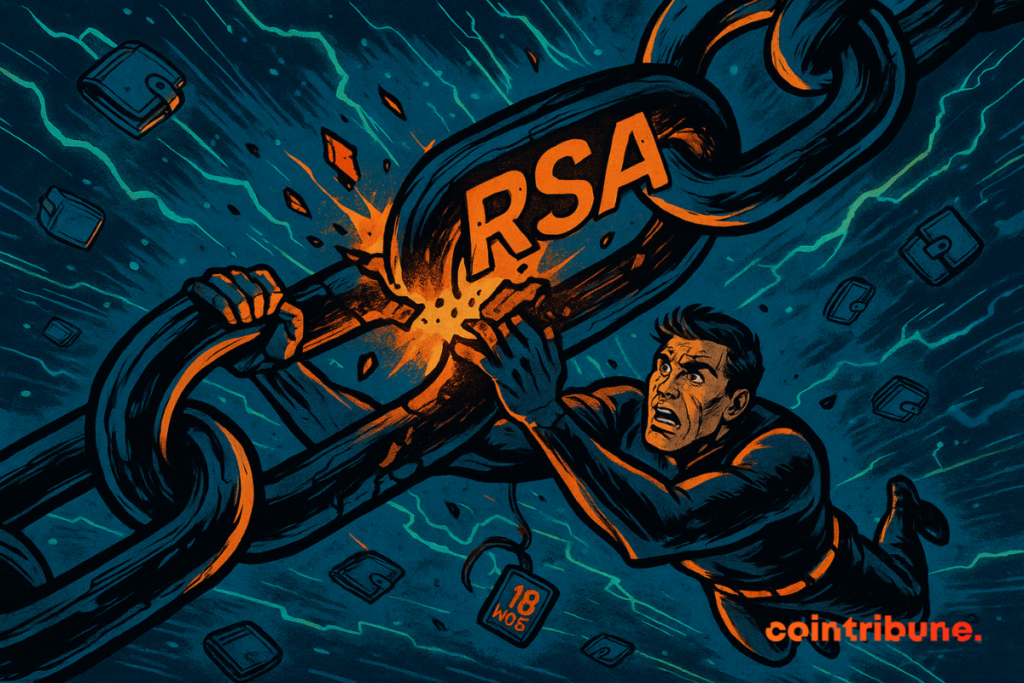Why Are Classical Solutions No Longer Sufficient Against Quantum Threats?
2025 marks a turning point in the quantum race. Japan has unveiled a 256-qubit superconducting computer, the most powerful ever designed in this format. A few days later, China made a strong move by powering up a system exceeding 1,000 qubits. Even better, Beijing announces concrete industrial targets within the next 18 months. But one event shakes global cybersecurity: a Chinese team reportedly succeeded in breaking RSA encryption using a quantum machine. These advances render classical cryptographic systems obsolete, including those used today by blockchains.

In brief
- Quantum threatens current blockchains by making RSA and ECC obsolete.
- Post-quantum solutions added afterwards create more risks than security.
- Naoris Protocol offers native, decentralized, and quantum-resistant security from the ground up.
Why Web3 should worry?
Blockchain cryptography still largely relies on RSA and ECC, both vulnerable to quantum algorithms such as Shor and Grover. A single compromised signature can grant access to an entire wallet.
A single vulnerable signature is enough to grant access to an entire wallet.
So-called “harvest-now, decrypt-later” attacks consist of storing encrypted data today to decrypt it later once quantum power is sufficient.
The impact goes far beyond the crypto sphere: smart contracts, validators, cross-chain bridges, or DAOs, all signed elements become readable, exploitable, and forgeable… forever.
Why aren’t patches enough?
Many blockchain projects try to add post-quantum layers to their protocols. But these attempts encounter major obstacles:
- Incompatibilities between old and new signatures;
- Forced migration of wallets;
- Risk of forks and liquidity fragmentation;
- Disruption of user experience.
Changing cryptographic engines mid-flight is like performing open-heart surgery on a running machine. This strategy weakens security instead of strengthening it.
Naoris Protocol: the native response to the quantum threat
Naoris Protocol offers a radically different solution. Designed natively for the post-quantum era, it provides a complete architecture, securing Web3 and Web2.
Sub-Zero Layer
This infrastructure layer incorporates the post-quantum standards Dilithium-5 and KEMs validated by the NIST. It allows transactions to be signed with proven resistance to quantum attacks.
dPoSec (Decentralized Proof-of-Security)
Every device participating in the network validates its integrity in real time, at each block. This logic strengthens trust across the entire chain.
Swarm AI
Decentralized intelligence learns from every intrusion attempt. A threat detected on one node becomes global immunity. Result: over 92 million transactions already processed on the testnet with post-quantum signatures.
Hybrid Web2 + Web3 use cases
Naoris goes beyond the blockchain sphere. It also targets traditional critical infrastructures.
Current applications include:
- EVM roll-ups;
- Cross-chain bridges;
- DeFi platforms;
- Urban IoT systems;
- Industrial infrastructures.
All benefit from a unified trust fabric, interoperable and continuously verifiable.
TGE $NAORIS: how to join the network?
The Token Generation Event ($NAORIS) is scheduled for end of July 2025. A public sale is currently ongoing on the Naoris Protocol website.
Users can already contribute on the testnet and earn rewards by validating network security (proof-of-security).
More information is available on the official Naoris Protocol website and on their official Twitter account.
The world is entering a new era. Breakthroughs in quantum computing disrupt the global balance of cybersecurity. Naoris Protocol offers a robust infrastructure, decentralized and adapted from the start to this new paradigm. Its defensive approach, combining post-quantum cryptography, real-time security consensus, and decentralized intelligence, protects the entire Web3 ecosystem and beyond.
Join Naoris today and be part of the advent of a secure internet for decades to come.
Maximize your Cointribune experience with our "Read to Earn" program! For every article you read, earn points and access exclusive rewards. Sign up now and start earning benefits.
The Cointribune editorial team unites its voices to address topics related to cryptocurrencies, investment, the metaverse, and NFTs, while striving to answer your questions as best as possible.
The contents and products mentioned on this page are in no way approved by Cointribune and should not be interpreted as falling under its responsibility.
Cointribune strives to communicate all useful information to readers, but cannot guarantee its accuracy and completeness. We invite readers to do their research before taking any action related to the company and to take full responsibility for their decisions. This article should not be considered as investment advice, an offer, or an invitation to purchase any products or services.
Investment in digital financial assets carries risks.
Read more